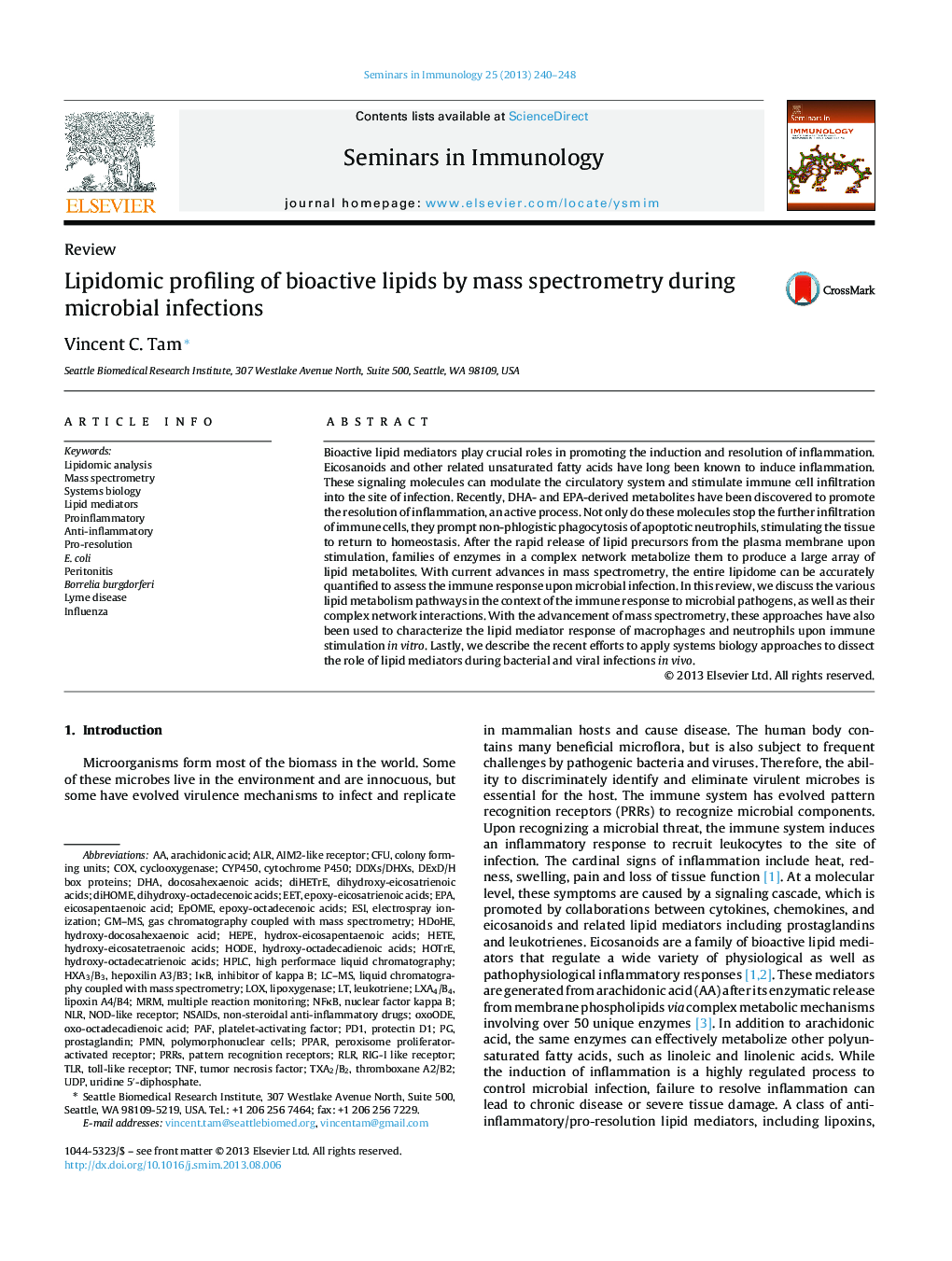| کد مقاله | کد نشریه | سال انتشار | مقاله انگلیسی | نسخه تمام متن |
|---|---|---|---|---|
| 3391402 | 1221043 | 2013 | 9 صفحه PDF | دانلود رایگان |

• Lipid mediators promote the induction and resolution of inflammation.
• The complexity of lipid metabolism network necessitates systems biology approaches.
• Advances in mass spectrometry allow for multiplex quantification of lipid species.
• In vitro and in vivo lipidomic profiling has generated intriguing insights.
• Comparative analysis of several infection models revealed common immune mechanisms.
Bioactive lipid mediators play crucial roles in promoting the induction and resolution of inflammation. Eicosanoids and other related unsaturated fatty acids have long been known to induce inflammation. These signaling molecules can modulate the circulatory system and stimulate immune cell infiltration into the site of infection. Recently, DHA- and EPA-derived metabolites have been discovered to promote the resolution of inflammation, an active process. Not only do these molecules stop the further infiltration of immune cells, they prompt non-phlogistic phagocytosis of apoptotic neutrophils, stimulating the tissue to return to homeostasis. After the rapid release of lipid precursors from the plasma membrane upon stimulation, families of enzymes in a complex network metabolize them to produce a large array of lipid metabolites. With current advances in mass spectrometry, the entire lipidome can be accurately quantified to assess the immune response upon microbial infection. In this review, we discuss the various lipid metabolism pathways in the context of the immune response to microbial pathogens, as well as their complex network interactions. With the advancement of mass spectrometry, these approaches have also been used to characterize the lipid mediator response of macrophages and neutrophils upon immune stimulation in vitro. Lastly, we describe the recent efforts to apply systems biology approaches to dissect the role of lipid mediators during bacterial and viral infections in vivo.
Journal: Seminars in Immunology - Volume 25, Issue 3, 31 October 2013, Pages 240–248